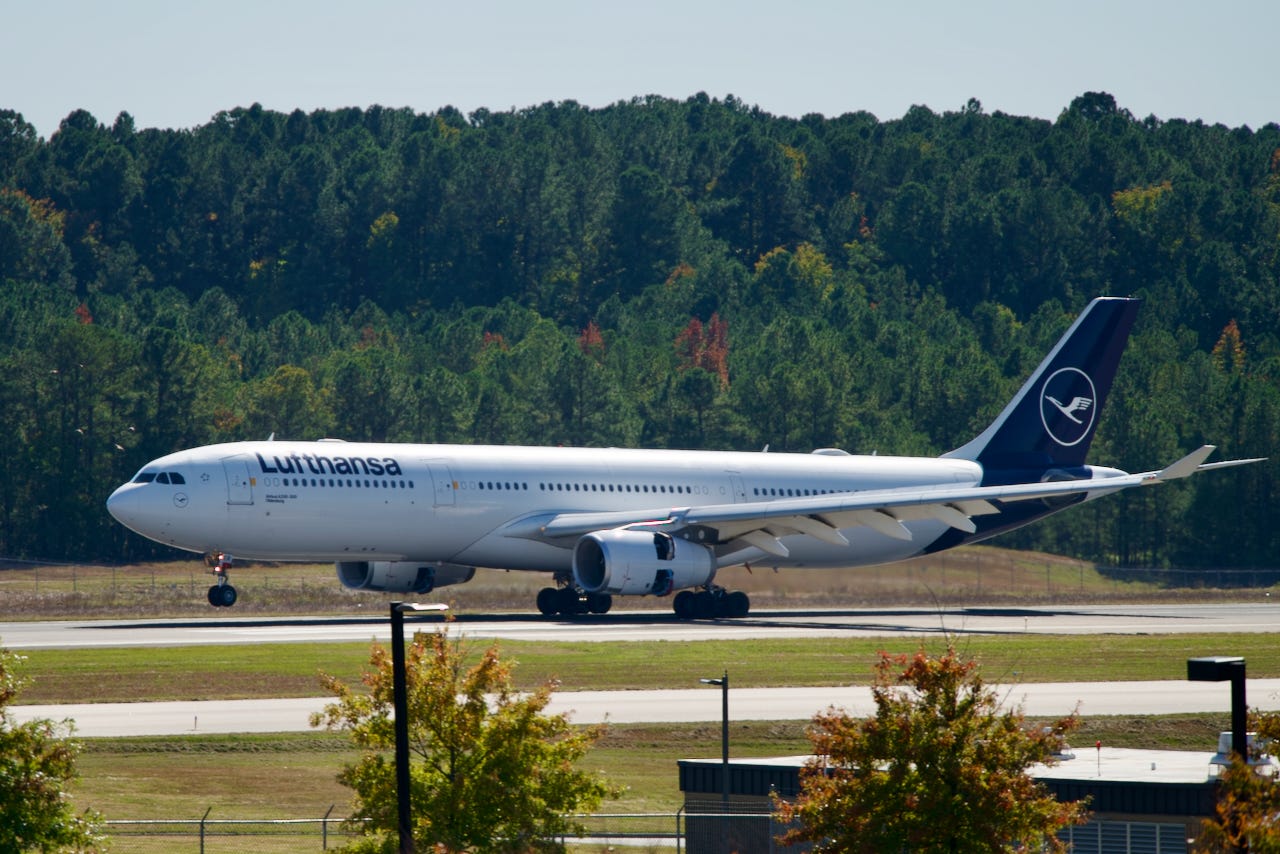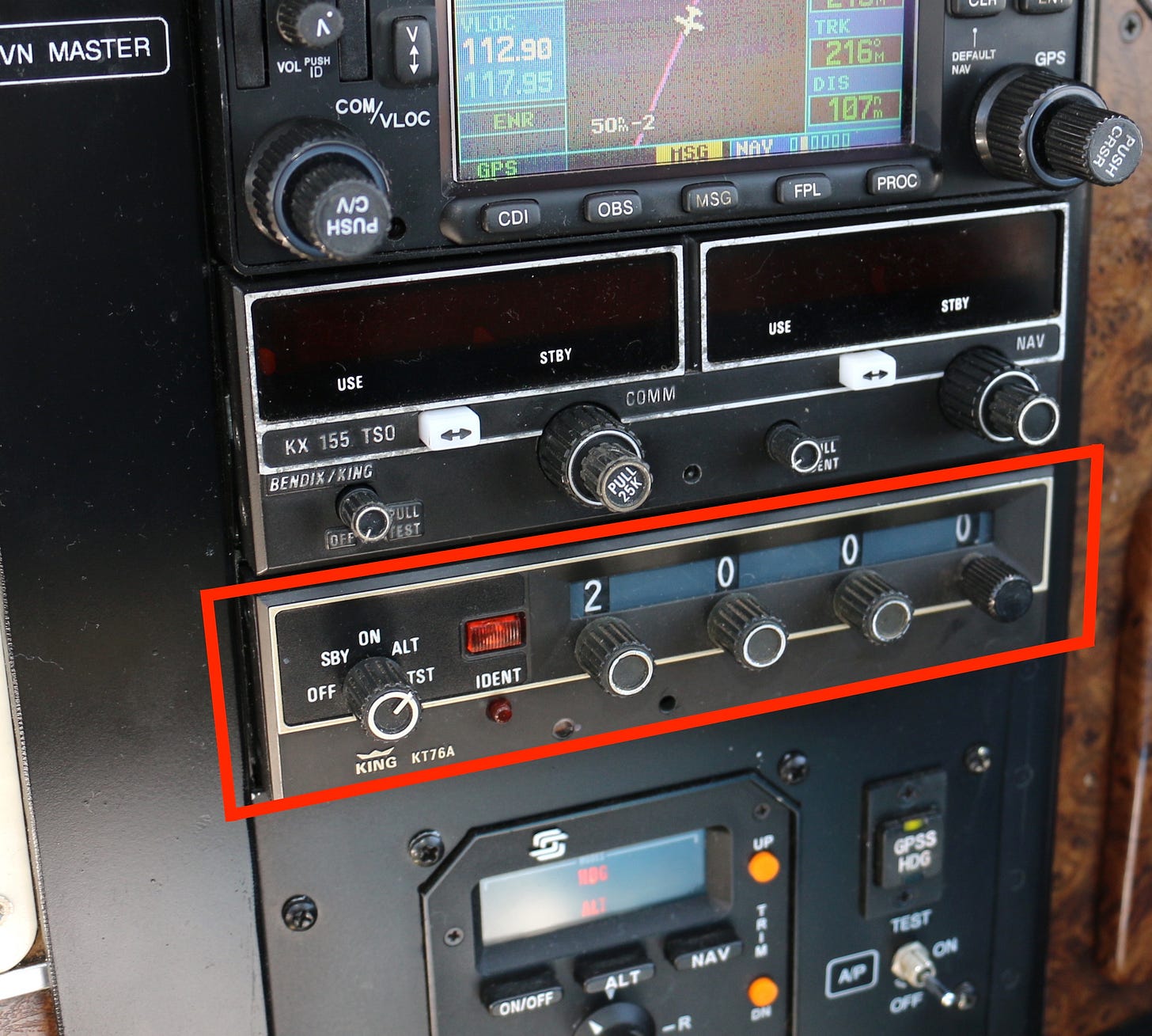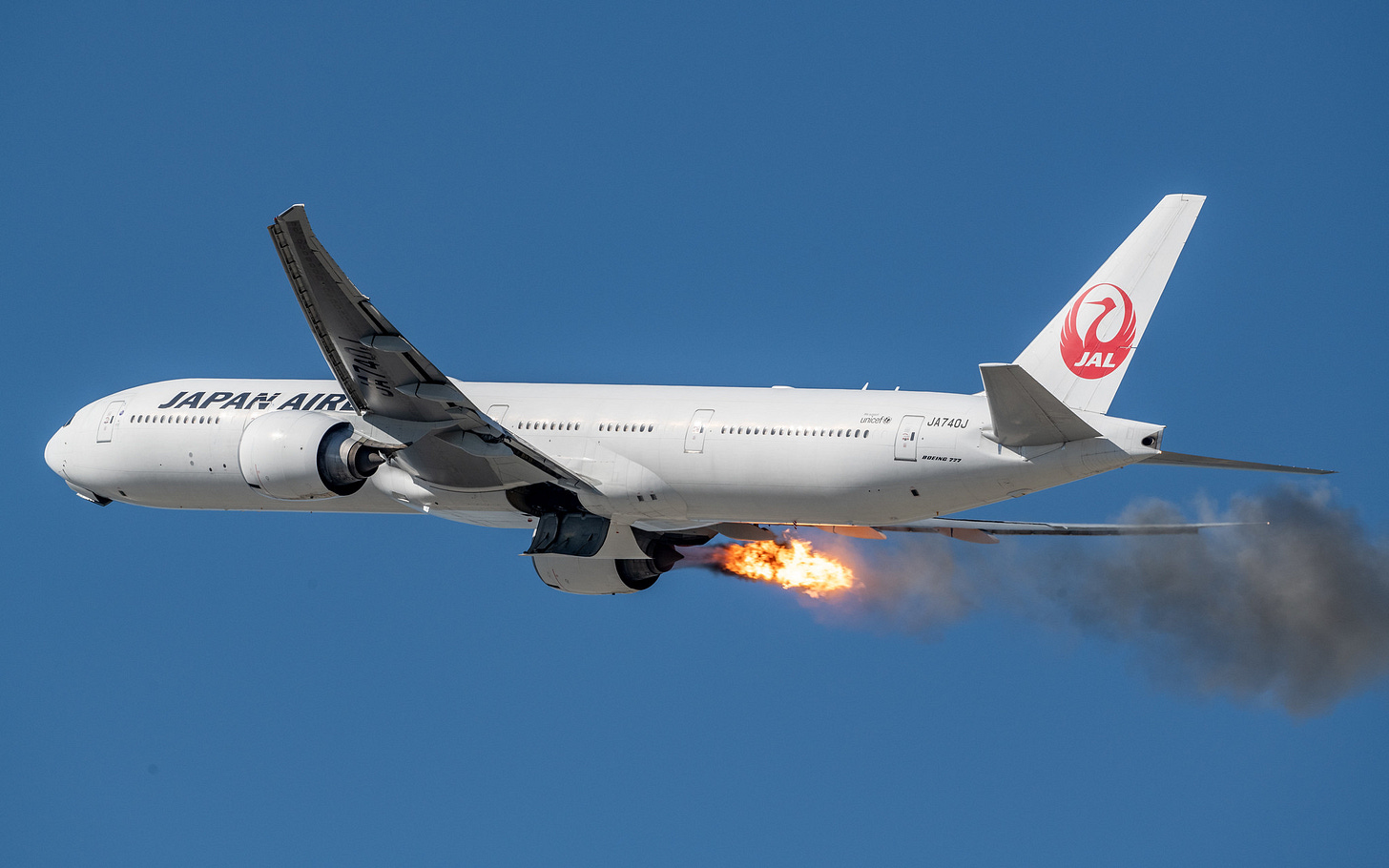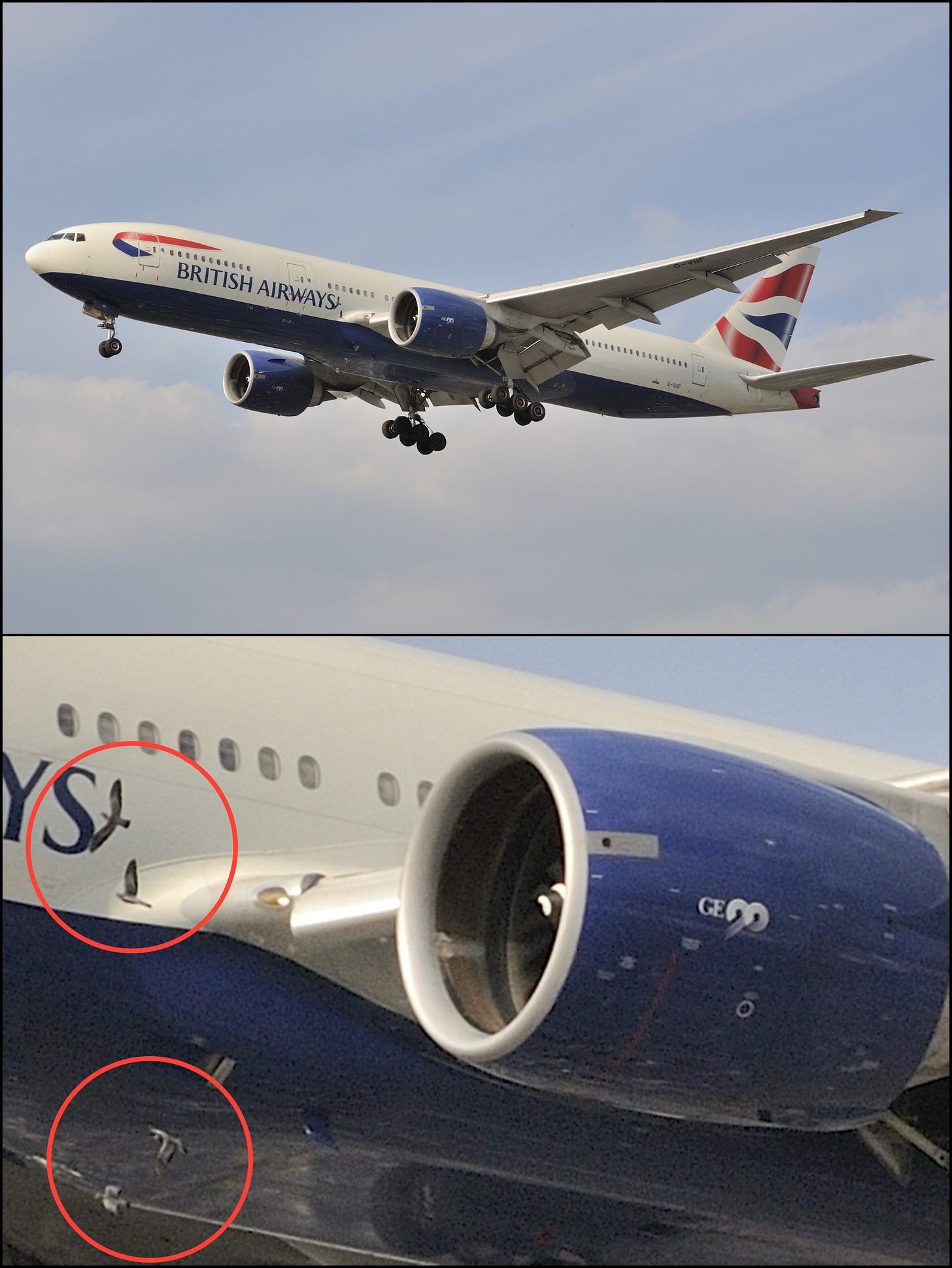27: Squawk 7700
The most common general emergencies in commercial aviation and how pilots manage them to ensure a safe landing.
270000Z JAN 25
Hello, and welcome to Flightlines!
Earlier this week, Frontier Airlines flight 3379 from Philadelphia to Miami declared an emergency over North Carolina. The crew had to shut down one of their engines and divert to Raleigh-Durham, where they landed safely about 30 minutes later. While the passengers faced a six-hour delay waiting for a replacement aircraft, the incident demonstrated exactly how these emergency protocols are meant to work—a routine response to an unplanned situation.
This comes as investigators of last month's Jeju Air crash revealed new findings suggesting simultaneous bird strikes on both engines during landing. This helps explain the total electrical failure and loss of control in its final moments.
In this issue, we'll examine these emergency declarations—what they mean, how they're used, and what typically prompts pilots to make them. The data on their frequency might surprise you, revealing just how rare these events are in the context of global air traffic. Let's explore what happens in those moments when things don't go according to plan.

Squawk 7700
Air traffic controllers monitor thousands of flights daily, occasionally encountering a signal that demands immediate attention: Squawk 7700. This universal emergency code, transmitted through an aircraft's transponder, serves as a crucial communication tool when things go wrong at altitude. Recent data reveals these emergencies occur roughly 36 times per week out of approximately 686,000 total flights—a mere 0.005% of all air traffic. This incredibly low frequency shows both the rarity of serious incidents and the aviation industry's preparedness to handle them.
Every aircraft in controlled airspace is assigned a unique four-digit transponder code that identifies it within the air traffic control system. While most flights use these routine codes, three emergency codes stand ready:
7500 for hijacking
7600 for radio failure
7700 for general emergencies
When pilots enter 7700 into their transponder, and “Squawk 7700,” it immediately alerts controllers to prioritize that aircraft and provide necessary assistance.

Squawk 7700 signals one of several categories of emergencies that require immediate attention. These situations typically stem from technical malfunctions, medical events, or environmental hazards—each demanding specific responses from both flight crews and controllers. While catastrophic emergencies make headlines, the vast majority of general emergencies are handled routinely through well-established protocols that prioritize safety above all else.
Engine failures, while rare in modern aviation, present one of the most serious technical challenges pilots face. Whether caused by mechanical issues or bird strikes, when an engine fails, crews must quickly identify the affected engine, secure it to prevent further damage, and begin planning for a single-engine landing at the nearest suitable airport. The reliability of modern jet engines makes these events exceedingly rare, but crews train extensively for this scenario.

Cabin pressurization issues trigger another category of emergency response. A loss of pressure at cruise altitude requires immediate action: oxygen masks deploy automatically, pilots don their own oxygen equiptment, and the aircraft begins a rapid descent to breathable air at lower altitudes. These emergency descents are dramatic but necessary, bringing the aircraft to a safe altitude typically within minutes.
Medical emergencies frequently prompt Squawk 7700 declarations as well. When passengers or crew members face severe health issues, pilots connect with ground-based medical services while coordinating with controllers to find the quickest path to emergency care. The priority becomes balancing the medical urgency with aircraft capabilities and nearby airport suitability.
Environmental challenges can also force emergency declarations. Severe weather encounters, particularly unexpected turbulence or thunderstorms, may require immediate deviation from planned routes. Bird strikes, though less common at cruise altitudes, can damage other critical systems, requiring careful evaluation and potentially immediate landing.

Throughout any emergency, pilots follow a time-tested mantra: Aviate, Navigate, Communicate. The squawk system itself was designed to support this hierarchy, reducing the communication burden on pilots so they can focus on flying the aircraft and determining their safest course of action. A simple code entry can convey critical information without requiring extensive radio communication in the immediacy of the incident.
Flight tracking platforms like Flightradar24 have allowed the public to observe these events, offering real-time alerts when aircraft declare emergencies.
Behind each emergency event lies a network of professionals working together to ensure safety. From pilots executing procedures to controllers clearing airspace and ground crews preparing for unusual arrivals. Understanding this system helps explain why air travel remains one of the safest forms of transportation, with sound protocols and dedicated professionals ready to handle any situation that arises.
The aviation industry's commitment to safety continues evolving, with each incident providing valuable lessons for future improvements. While Squawk 7700 events remind us that air travel isn't without risks, they also showcase the effectiveness of safety protocols and the rarity of these events. This balance of preparedness and continuous improvement ensures that when emergencies do occur, pilots and controllers have the tools and procedures needed to protect the lives in their care. —✈
PS: I wanted to let you know that I’ll soon be activating the Substack subscription feature for this newsletter. This isn’t about collecting payments but rather about improving visibility, as I believe Substack may promote the newsletter more actively with this feature enabled. While I’d certainly appreciate your support, it’s not expected, and the content will remain freely available for everyone to enjoy. Thank you for being part of this effort!
✈
Thank you for reading.
Flightlines will be back next week with more insights and updates from the world of commercial aviation.
Until then, safe travels and happy flying!




Fascinating! Everyone should know these responses, like knowing when to call 911. I live in a retirement community where 911 is for unknown medical reasons but is also a response to a fall where the individual can’t get up. Possibly the air industry is more organized than 911! Great report!
Talk of mid-air bird strikes will never NOT make me think of this…https://m.youtube.com/watch?v=RxBNybR7Rv0
Another interesting topic within the wide world of aviation! 👏And cheers to paid subscriptions.